World Congress - Madrid
The first World Garlic Congress took place in Madrid in February this year. As the keynote speaker, I addressed 150 of the world's key garlic players old and new. This was an opportunity for us to network and share knowledge across the globe. Through existing and new contacts, I have been keen to explore the opportunities and developments taking place in the wider garlic world. This spurred a number of trips to meet with these world garlic players to enhance our garlic knowledge, share this knowledge, source garlic types and bring this all back to our Garlic Farm customers.
North America
June and July is garlic harvest time throughout the northern hemisphere: a great opportunity to see garlic harvests in action. On my trip to North America, I had the pleasure of witnessing the harvest of heritage hardneck varieties in Ontario, Californians fawning over the variety of garlic available at farmers' markets in Sonoma County, Napa Valley and large scale commercial garlic production around the Central Valley, ..plus seizing an opportunity to explore the Arizona desert on horseback at 110F.
Moravia
In July, I travelled with my wife Jenny to Buchlovice, Moravia where I was honoured to open their annual Garlic Festival. It was exciting and fascinating to be with thousands of Czech people dedicated to their own garlic heritage. A beautiful event demonstrating garlic's place in their rich culture. Folk dancers, music, garlic growers presenting their crops and even a garlic anthem. This is garlic at the centre of folk tradition. It is an exciting prospect to think that we are making connections across the world of garlic. This was made even more apparent in my trip to Israel in June where agricultural scientists are working to create true garlic seed. This is taking garlic back to a point in time 10000 years ago when garlic in its
wild state produced a flower and fertile seed. All current cultivated garlic varieties have lost the natural ability to produce true seed so this scientific development has huge implications for retrieving the genetic diversity of garlic.
Back at The Garlic Farm
We're back to planting again. Light and loamy, the ground is in perfect condition for our Elephant Garlic planting. September is the best time to get Elephant Garlic in the ground. Other varieties such as heritage hardnecks, Iberian and Provence will be planted in October. Solent Wight, Tuscany and Picardy are better suited to later planting between January and March.
Most excitingly, we have a new technique for rust prevention to share with our fellow garlic growers. If you are worried about getting rust on your garlic, fear not, we have a very simple non-chemical solution! Rust (Puccinia Allii) is the bane of garlic gardener's life. 90% of the question people ask us in our farm shop involve how to prevent rust. Rust is an airborne disease that can attack any garden. For garlic, rust spores develop as blisters on the leaf of the garlic plant diminishing the leaf area available for photosynthesis to take place. This reduces bulbs size at best, heavy infections could kill the plant. Infected leaf material should be destroyed. For the amateur gardener there is no commercially available chemical to resolve rust problems. You can imagine our excitement when we happened upon this incredibly simple rust solution via a famous Gypsy Jazz musician who happens to be a keen garlic grower. On a summers evening in La France Profonde celebrating my son Hugo's wedding to his lovely French wife Mel, we were entertained royally by Coco Briaval, a Gypsy Jazz legend. Naturally, my conversation with him turned to garlic and here is his solution to garlic rust. Simply find some used electric cable, take the copper (earth) wire, cut into short lengths of 3-4cm and push through the stem of the garlic 2cm above ground level.














